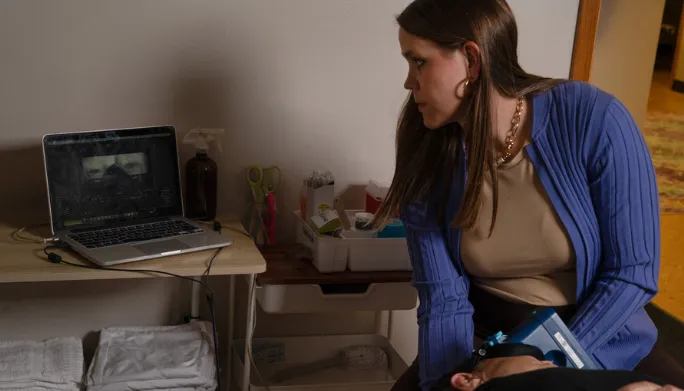OTHER VESTIBULAR DISORDERS
The vestibular system, a complex network within our inner ear and brain, is responsible for maintaining our sense of balance and spatial orientation. When this system is disrupted, a variety of conditions can arise, each with its unique set of symptoms and challenges. The diverse range of vestibular disorders underscores the importance of a holistic understanding and individualized care approach. Here, we explore some of these conditions:
Perilymph Fistula
A perilymph fistula (PLF) is an abnormal communication between the fluid-filled inner ear (specifically the perilymphatic space) and the air-filled middle ear. This can result from head trauma, sudden changes in atmospheric pressure (such as might be experienced in scuba diving), or even after certain medical or surgical interventions. Patients with a PLF often experience hearing loss, tinnitus (ringing in the ears), and vertigo, which is a spinning sensation or dizziness. Timely diagnosis and treatment, which may include surgical repair, are crucial to alleviate symptoms and prevent further complications.
Superior Semicircular Canal Dehiscence (SSCD)
Superior Semicircular Canal Dehiscence (SSCD) is a condition wherein a thinning or complete absence occurs in the bony covering of one of the inner ear’s balance canals. This can lead to auditory and balance disturbances. Symptoms might include hearing one’s own heartbeat or eye movements (pulsatile tinnitus), vertigo induced by loud noises or pressure changes, and possibly hearing loss. Diagnosis typically involves specialized imaging and testing. Surgical intervention can be considered for those severely affected.
Acoustic Neuroma in Clive
Acoustic neuroma, also known as vestibular schwannoma, is a benign tumor that originates from the vestibulocochlear nerve, which connects the ear to the brain. While the tumor is noncancerous, its growth can affect both hearing and balance. Early symptoms often include hearing loss on one side, tinnitus, and occasionally dizziness. As the tumor grows, it might exert pressure on nearby structures, leading to other neurological symptoms. Treatment options range from monitoring to surgery or radiation, depending on the tumor’s size and growth rate.
Bilateral Vestibular Hypofunction
Bilateral vestibular hypofunction (BVH) is a condition characterized by reduced or absent function of both inner ears, particularly affecting the balance organs. Common causes include ototoxic drugs, meningitis, or certain autoimmune conditions. Individuals with BVH often experience difficulty maintaining balance, especially in the dark or on uneven surfaces, and may have difficulty tracking moving objects visually. Physical therapy, which focuses on vestibular rehabilitation, can help improve balance and reduce associated symptoms.
Ototoxicity
Ototoxicity refers to the damaging effects that certain medications or chemicals can have on the inner ear, particularly affecting cochlear and vestibular structures. These agents can lead to hearing loss, tinnitus, or balance issues. Some common ototoxic substances include certain antibiotics, chemotherapy drugs, and high doses of aspirin. It’s vital for patients to be aware of these potential side effects and for healthcare providers to monitor auditory and vestibular function when prescribing these agents.
Neurotoxic Vestibulopathy
Neurotoxic vestibulopathy is a condition where damage to the nerve pathways responsible for balance occurs due to toxic substances. These neurotoxins can be medications, chemicals, or other agents that harm the central or peripheral parts of the vestibular system. Symptoms can vary but primarily include vertigo, dizziness, and imbalance. Identifying and eliminating the causative agent is essential, and treatment may also involve supportive care and physical therapy to manage and improve symptoms.

Enlarged Vestibular Aqueduct (EVA)
An enlarged vestibular aqueduct is a congenital condition where the bony canal that houses the endolymphatic duct and sac in the inner ear is larger than usual. This enlargement can lead to a higher risk of early hearing loss and balance issues, especially if there’s a sudden head injury. The exact cause of EVA is unclear, but genetic factors are believed to play a significant role.
Mal de Débarquement (MdDS)
Literally translating to “sickness of disembarkation,” Mal de Débarquement is a balance disorder that often starts after an extended sea cruise, flight, or other sustained motion event. Sufferers typically feel as though they are still in motion even when stationary, leading to a persistent sensation of rocking or bobbing. This can last days, months, or even years.
Autoimmune Inner Ear Disease (AIED)
AIED is a rare condition where the body’s immune system mistakenly attacks the inner ear structures. This results in progressive hearing loss, tinnitus (ringing in the ears), and dizziness. While the exact cause remains unknown, it’s believed that some individuals may have a genetic predisposition or exposure to certain triggers.
Secondary Endolymphatic Hydrops
This condition arises due to an abnormal accumulation of endolymph fluid in the inner ear, leading to symptoms like vertigo, hearing loss, and tinnitus. While similar to Ménière’s disease, Secondary Endolymphatic Hydrops are distinct in that they occur as a consequence of another primary ear-related issue or injury.
Cholesteatoma in Clive
Cholesteatoma is a non-cancerous growth that develops in the middle ear, usually as a result of chronic ear infections. These growths can lead to hearing loss by eroding vital structures in the ear. If left untreated, cholesteatomas can cause complications like infections in the surrounding bone and even facial nerve paralysis.
Persistent Postural Perceptual Dizziness (PPPD)
PPPD is a chronic neurological disorder where individuals experience dizziness and unsteadiness, especially when standing or walking. Unlike other balance disorders, PPPD’s symptoms aren’t linked to specific head movements or positions but are often triggered by situations that challenge balance, such as walking in a busy mall or being in crowded spaces.
As evident, the world of vestibular disorders is vast and intricate, highlighting the importance of specialized care and understanding in managing and treating these conditions.


